Top Techniques to Avoid Ingrown Hairs on Your Chin
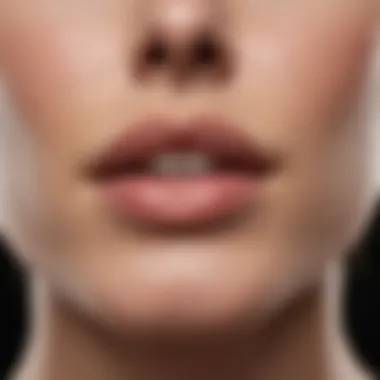

Intro
Ingrown hairs on the chin can be a real pain, both literally and figuratively. They often bring discomfort and can leave unsightly bumps that seem to stick out like a sore thumb. The issue isn't just cosmetic; it can affect a person's confidence and mental wellness. Understanding how to prevent these bothersome irritations is crucial for maintaining smooth and healthy skin.
When it comes to grooming practices, a few tweaks can make all the difference. Various factors contribute to ingrown hairs, including shaving techniques, skin type, and even climate conditions. By addressing these root causes, you can significantly reduce your chances of encountering this problem.
In this article, we'll explore effective strategies tailored to keep your chin free from unwanted hairs. Get ready to dive into practical solutions, product recommendations, and healthy habits that can enhance your grooming routine. You’ll find that implementing these strategies isn't just about aesthetics; it's also about the overall health of your skin.
The journey toward ingrown hair prevention begins with understanding why they occur in the first place. Let’s examine these causes and how you can step up your game.
Understanding Ingrown Hairs
Ingrown hairs can be more than a mere nuisance; they often lead to discomfort, irritation, and unsightly skin blemishes. Understanding the nature of ingrown hairs is fundamental in preventing and managing them effectively. When hairs grow back into the skin instead of emerging from the follicle, it can cause inflammation and form painful bumps. This is particularly relevant in areas like the chin, where grooming habits can exacerbate the problem. By grasping the complexity of this issue, one can adopt tailored strategies to prevent these stubborn invaders.
What Are Ingrown Hairs?
Ingrown hairs are hairs that have curled or grown back into the skin instead of up and out. They can occur anywhere on the body, but the chin, due to regular shaving, is a common hot spot. Upon becoming trapped, the hair can lead to redness, swelling, and sometimes infection. In many cases, an ingrown hair appears as a small, painful bump which can evolve into more severe skin issues if left unchecked.
Common Causes of Ingrown Hairs
Several factors contribute to the occurrence of ingrown hairs:
- Shaving Techniques: Razor blades can cut hair at an angle, causing hair to grow back into the skin.
- Curly Hair: Individuals with naturally curly or coarse hair are at a higher risk, as their hair can easily bend back into the follicle.
- Tight Clothing: Wearing clothes that hug the skin can induce irritation and cause hair to become trapped.
- Dull Razors: Using an old or dull razor increases the likelihood of skin irritation and improper hair cutting.
"Proper grooming habits and attention to detail can significantly reduce the occurrence of ingrown hairs, leading to smoother skin and improved confidence."
Who Is Most Affected?
While anyone can experience ingrown hairs, some groups may be more predisposed due to various factors:
- Men: Especially those who regularly shave facial hair, as the combination of coarse hair and shaving techniques increases risks.
- Individuals with Curly Hair: Those with naturally curly hair often find that their strands tend to curl back into the skin—with increased frequency.
- People with Sensitive Skin: Those with skin sensitivities can experience irritation easily, making them more susceptible to ingrown hairs.
- Certain Ethnic Groups: Research indicates that ingrown hairs are particularly prevalent among people of African descent due to the natural texture of their hair.
Grooming Techniques to Minimize Ingrown Hairs
Ingrown hairs on the chin can be not only annoying but downright painful. Effective grooming techniques play a significant role in preventing these nuisances. A well-structured grooming routine can reduce the risk of hairs curling back into the skin, creating those irritating bumps. Let’s explore practical and effective strategies that cater specifically to this issue. By adopting these measures, you can enjoy smoother skin and a more confident appearance.
Preparation Before Shaving
Before reaching for the razor, there’s much to consider in preparation that can set the pace for a smooth shave. This stage is crucial to ensure the skin is ready, and the right tools and steps are utilized effectively.
Choosing the Right Tools
Selecting the right tools is fundamental in achieving a clean shave while minimizing the risk of ingrown hairs. High-quality razors, whether they are straight, safety, or cartridge types, should be chosen based on personal comfort. For instance, a razor with multiple blades can provide a closer shave but might cause irritation if used improperly.
A single-blade razor, on the other hand, is often gentler on the skin and can be less likely to cause ingrown hairs as it allows for better control and reduces the risk of cutting hair below the skin level. Opting for a razor with a flexible head can also maneuver better around the chin's contours.
In summary, picking a tool that meets individual needs can have a considerable impact on the effectiveness of the shaving process and overall skin health.
Skin Preparation Steps
The way skin is prepared before shaving is equally critical. Adopting a consistent skin prep routine can elevate the shaving experience significantly. First, cleansing the face with a gentle facial cleanser helps remove dirt and oil, preventing any buildup during the shave.
Next, applying a warm towel to the chin for a few minutes can soften the hair and open up pores, allowing for a smoother razor glide. This step is often overlooked, yet it lays the groundwork for reducing irritation. Using a pre-shave oil can also add an extra layer of protection and moisture, enabling the blades to glide more effortlessly without tugging on the hair.
Effective skin preparation can make all the difference by minimizing friction and hopefully reducing the occurrence of ingrown hairs.
Proper Shaving Techniques
Once the preparation stage is complete, it’s time to implement proper shaving techniques. How one shaves can affect skin health and the likelihood of developing ingrown hairs significantly.
Shaving with the Grain
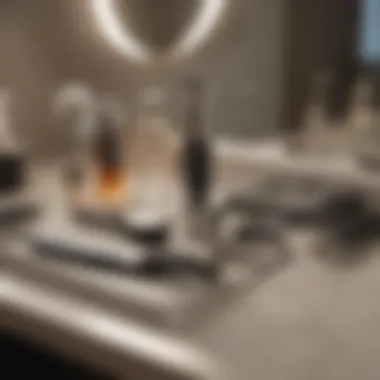
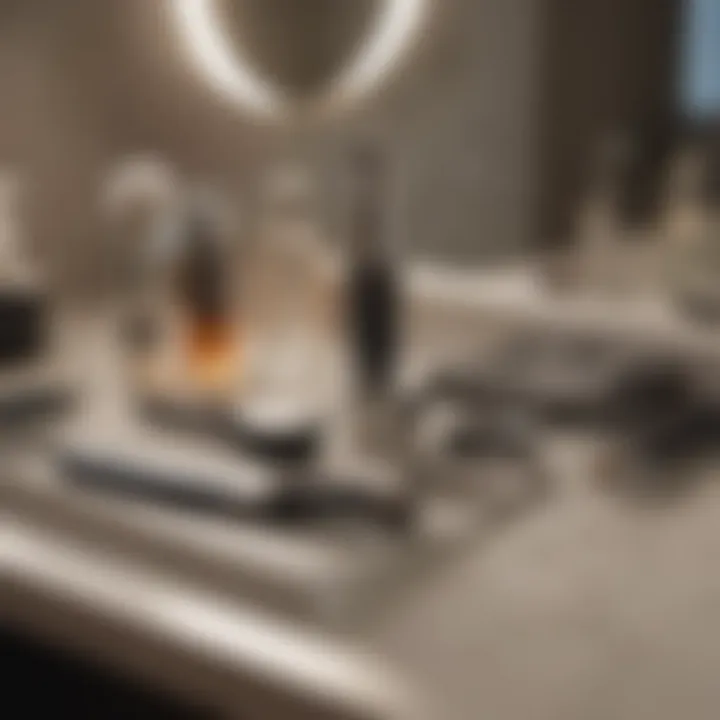
One of the most recommended tactics is shaving with the grain. This means following the natural direction of hair growth, which reduces the risk of hair being cut too short or beneath the skin. Not only does this method lessen irritation, but it also leads to a more comfortable shaving experience.
Shaving against the grain may give a closer shave but can lead to an increased risk of hair curling back into the skin, upping the chances of ingrown hairs. Thus, understanding and respecting hair growth direction is vital for effective hair removal.
Using Shaving Cream Effectively
Choosing the right shaving cream can enhance the process. Products containing hydrating ingredients provide a smooth surface, allowing the razor to glide effortlessly. Creams that produce a rich lather help lift hair from the skin, reducing the chance of cuts and irritation.
It's also wise to avoid products with strong fragrances or alcohol, which might irritate sensitive skin in the chin area. A soothing, moisturizing shaving cream can make a world of difference, ensuring the experience remains pleasant while also minimizing skin trauma.
Moreover, applying the shaving cream appropriately, using a brush or fingers to work it into the skin, can make application more effective and enjoyable.
Frequency of Shaving
How often one chooses to shave can significantly affect ingrown hairs as well. For many individuals, allowing some time between shaves can improve conditions for the skin to recover. Shaving daily may lead to increased irritation and hair curling back into the skin, making it essential to strike a balance.
By monitoring how one’s skin responds to different frequencies, it’s possible to fine-tune personal grooming habits. This strategy empowers individuals to avoid unnecessary discomfort while still maintaining their preferred style.
Aftercare Post-Shaving
What’s done after shaving is just as pertinent as the act itself. Aftercare is key when it comes to maintaining skin health and preventing ingrown hairs from forming.
Applying Moisturizers
After shaving, applying moisturizers is essential for skin hydration and recovery. A good moisturizer not only replenishes lost moisture but also soothes freshly shaved skin. Products containing ingredients such as aloe vera, shea butter, or jojoba oil are often beneficial as they provide hydration and help prevent irritation.
Keeping the skin moisturized establishes a protective barrier, reducing the probability of inflammation and ingrown hairs. It’s important to apply moisturizer while the skin is still slightly damp for better absorption and effectiveness.
Using Anti-Inflammatory Products
Incorporating anti-inflammatory products post-shave can make a difference in soothing the skin and reducing potential irritation. Gel-based products with chamomile or tea tree oil can calm redness and puffiness immediately after shaving.
Analyzing the skin’s needs and addressing them with targeted products can significantly alter the outcomes after shaving. While this step may feel optional, it actually establishes a foundation for long-term skin health by warding off post-shave complications.
Pro Tip: Always remember, it’s the small details that often lead to the best results in skin care and grooming!
Overall, establishing an effective grooming regime tailored around these principles can help significantly reduce the chances of ingrown hairs forming, leading to a smoother and healthier chin.
Alternative Hair Removal Methods
Understanding the various methods of hair removal is crucial for anyone grappling with ingrown hairs on the chin. The right technique can help alleviate discomfort and prevent the formation of those pesky bumps that many dread. In this section, we will examine three popular alternatives: waxing, laser hair removal, and depilatory creams. Each method has its benefits and drawbacks, and knowing what suits you best can make all the difference in your grooming routine.
Waxing vs. Shaving
Waxing and shaving are two widely used methods, but they serve different purposes. Waxing pulls hair out from the roots, offering longer-lasting results than shaving, which merely trims hair at the skin level. However, many people experience adverse reactions to waxing, such as redness or irritation, particularly on sensitive skin.
Benefits of Waxing:
- Longer-lasting results—hairs take longer to grow back.
- Reduced risk of ingrown hairs when done properly.
- Leaves skin feeling smooth and exfoliated.
Considerations:
- Initial discomfort during the process.
- Risk of skin irritation or infection.
- Requires hair to be a certain length for effective removal.
On the other hand, shaving is quick and convenient but often leads to a higher frequency of ingrown hairs due to the hair being cut at an angle. Depending on your skin type and hair growth rate, you might find that shaving needs to be done more often than waxing would.
Laser Hair Removal
Laser hair removal has gained popularity for those seeking a more permanent solution. This technique uses concentrated light to target hair follicles, inhibiting future growth. It’s important to note that this method works best for individuals with fair skin and dark hair.
Benefits of Laser Removal:


- Considerably long-lasting results—many experience a significant reduction in hair regrowth.
- Minimal discomfort compared to waxing.
- Less risk of ingrown hairs once the area is treated multiple times.
Considerations:
- Usually requires multiple sessions for optimal results.
- Can be expensive compared to other methods.
- Not as effective on lighter hair colors.
Depilatory Creams
Finally, there's the option of using depilatory creams. These creams dissolve hair at the skin's surface, meaning hair is less likely to grow back trapped beneath the skin. They are usually easier to use, especially for those who want a no-fuss option.
Benefits of Depilatory Creams:
- Quick and easy application.
- No risk of cutting the skin like shaving.
- Can be effective on various hair types.
Considerations:
- Potential for allergic reactions or skin sensitivity, so a patch test is crucial.
- The results are temporary, so frequent application is necessary.
- The strong chemical smell might not be appealing to everyone.
In choosing the right hair removal method, it's essential to assess your skin type, pain tolerance, and budget.
By weighing the pros and cons of each method, individuals can make informed decisions suited to their specific needs. Finding a method that aligns with your lifestyle and skin type is the first step in preventing those annoying ingrown hairs on the chin.
Skincare Considerations
When dealing with ingrown hairs, the skin’s health tends to take center stage. Good skincare practices lay the groundwork for preventing these frustrating bumps from developing on the chin. By adopting specific skincare considerations, one can create an environment where hair follicles can grow smoothly without getting trapped under the skin.
Understanding your skin type is the first step in this endeavor. Not every product or approach will work for everyone. Those with oily skin may need lightweight, non-comedogenic products, while dry skin types might require heavier moisturizers to maintain hydration.
General skincare routines that include cleansing, moisturizing, and sun protection can work wonders in reducing irritation and inflammation, which are critical players in the life cycle of ingrown hairs. It’s not merely about the surface; rather, an effective routine should also account for the underlying causes that contribute to this hair dilemma.
Exfoliation Techniques
Physical Exfoliation
Physical exfoliation employs methods that manually scrub away dead skin cells. This is crucial in preventing clogged pores, as it leaves a cleaner surface for hairs to emerge. It typically involves tools like scrubs or brushes that create friction.
One of the key aspects of physical exfoliation is its immediate visible results. After a session, the skin often appears brighter and is smoother to touch. However, one must tread carefully, as over-exfoliating can lead to irritation and other issues such as redness or even more ingrown hairs.
The appeal of physical exfoliation lies in its simplicity and ease of use. Common ingredients in such products—like sugar or salt—are accessible and often found in many skincare routines. Regularly partaking in this can help keep the skin in tip-top shape.
Chemical Exfoliation
On the flip side, chemical exfoliation uses specific acids to dissolve dead skin cells, providing a different approach altogether. Alpha-hydroxy acids and beta-hydroxy acids are often highlighted in skincare lore. They penetrate the skin to effectively unclog pores and improve overall texture, which can be particularly beneficial for those prone to ingrown hairs.
A standout feature of chemical exfoliation is its ability to offer longer-lasting results. Where physical methods might show temporary improvement, chemical exfoliants can encourage cellular turnover over time. This can create healthier skin, which is directly related to fewer incidences of ingrown hairs.
However, caution is advised with chemical exfoliation, as it can increase skin sensitivity. Finding a balance in frequency is key—too much exfoliation could irritate the skin, ultimately leading to discomfort.
Choosing Suitable Skincare Products
When selecting products to combat ingrown hairs, ingredients play a critical role. Opting for quality formulations can mean the difference between smooth skin and a hive of irritation.
Ingredients to Look For
In the quest to prevent ingrown hairs, certain ingredients shine brighter than others. Salicylic acid is one such component, known for its ability to unclog pores and reduce inflammation. Products containing gentle exfoliating ingredients, like lactic acid or glycolic acid, can also support smoother skin that minimizes the chances of hairs growing sideways.
The importance of non-comedogenic formulas cannot be overstated. By selecting products that won’t block pores, individuals can often side-step the very root of ingrown hairs, making it a biological bulletproof vest, so to speak.
Ingredients to Avoid
On the other side of the spectrum, some ingredients may aggravate the situation, causing more harm than good. Heavy oils or waxes often found in some moisturizers can compromise pore clarity. Alcohol-containing products may strip the skin of its natural oils, prompting increased irritation when hairs try to break through.
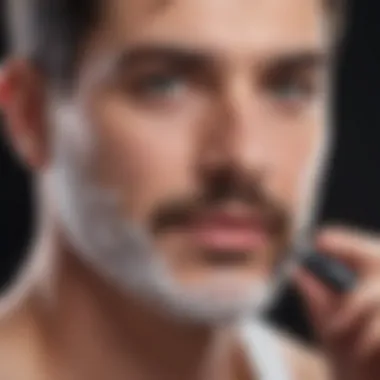
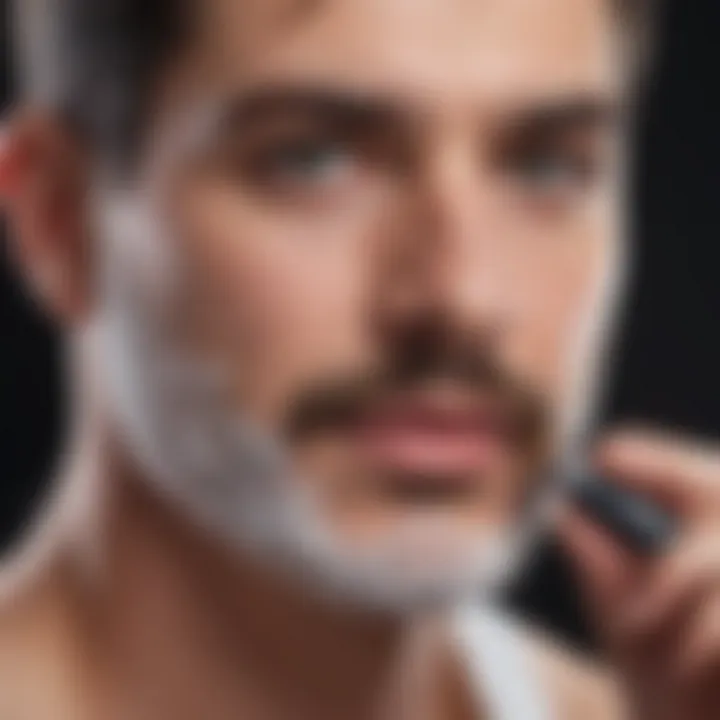
Being able to recognize irritating ingredients can empower users to make wiser skincare choices. This understanding doesn’t merely enhance the skincare regimen but rather serves as a protective measure, effectively working toward a skin free from ingrown hairs.
Ultimately, keeping a steady eye on one’s individual needs and skin reactions when selecting products can lead to a harmonious balance that allows for the prevention of ingrown hairs. By emphasizing both physical and chemical methods of maintenance, as well as understanding what to include and exclude in skincare products, achieving smooth skin, free from frustrating conditions, becomes a much more attainable goal.
Lifestyle Adjustments
Making thoughtful lifestyle choices plays a significants role in preventing ingrown hairs on the chin. It's not just a matter of grooming techniques; it’s about cultivating habits that support the skin's health from within. By incorporating simple adjustments into daily life, individuals can contribute to healthier skin and minimize pesky bumps while also improving general wellbeing.
Hydration and Diet
Staying hydrated and maintaining a well-balanced diet are cornerstones of good skin health. Our skin, the body’s largest organ, thrives on water and nutrients, which help maintain its elasticity and resilience. When the body is adequately hydrated, the skin is better able to slough off dead cells, reducing blockages that can lead to ingrown hairs.
"You are what you eat"—this old adage rings especially true when it comes to skin health. A nutrient-rich diet can influence the skin's appearance and function.
- Drink Plenty of Water: Aiming for at least eight glasses a day can keep the skin hydrated, helping it stay smooth and supple. Don't wait till you’re thirsty; make it a habit to sip throughout the day.
- Include Anti-Inflammatory Foods: Foods rich in omega-3 fatty acids—like salmon and walnuts—can help reduce inflammation. Such inflammation is sometimes a culprit in the formation of ingrown hairs.
- Vitamins and Minerals: Incorporate foods high in vitamins A, C, and E, such as carrots, citrus fruits, and spinach. These vitamins promote skin repair and regeneration, which is essential for maintaining healthy hair follicles.
Moreover, dietary habits can also affect hormone levels, which in turn influence hair growth patterns. Consider cutting back on processed foods and increasing fiber intake through fruits, veggies, and whole grains to maintain balanced hormones and support skin health.
Stress Management
Stress can have detrimental effects on the skin and is often an overlooked factor in skincare. High stress levels can trigger hormonal fluctuations that may lead to excess oil production, clogged pores, and inflammation.
Adopting stress management techniques can be as vital as any skincare routine:
- Mindfulness and Meditation: Even short, daily practices can calm the mind. Techniques like guided meditation can lower cortisol levels, promoting calmness in both mind and skin.
- Physical Activity: Endorphins released during exercise can enhance mood and lead to better stress management. Whether it’s a brisk walk or a more rigorous workout, finding a routine that works helps.
- Sleep Hygiene: Never underestimate the power of a good night’s sleep. Aim for 7-9 hours of quality sleep each night. Lack of sleep can elevate stress hormones and compromise skin health.
In summary, being mindful about daily lifestyle decisions can have profound impacts on skin appearance and health. By emphasizing hydration, diet, and stress management, one can not only prevent ingrown hairs on the chin but also cultivate an overall sense of well-being.
Seeking Professional Help
Experiencing ingrown hairs can be a nuisance, and sometimes, home remedies just don’t cut it. This is where seeking professional help becomes paramount. Consulting a dermatologist not only provides you with expert advice but also opens doors to treatment options tailored to your specific skin type and condition. An experienced skin doctor can offer insights that average grooming practices often overlook, leading to more effective prevention strategies.
Visiting a dermatologist can help demystify some aspects of skin care that might be causing ingrown hairs. Moreover, professionals can pinpoint underlying conditions that might be influencing your skin’s response to hair removal methods. This specialized knowledge can minimize frustration and common misconceptions surrounding the issue of ingrown hairs, empowering you with the right information to make informed choices going forward.
When to Consult a Dermatologist
Knowing when to visit a dermatologist can feel tricky. If you find yourself constantly battling ingrown hairs that refuse to budge, it may be time to seek professional assistance. Here are some signs that indicate you should schedule an appointment:
- Persistent irritation: If bumps or redness linger long after shaving or waxing, it might signal an underlying issue.
- Infection signs: Look out for increased pain, swelling, or pus. Infections can often happen if an ingrown hair is not treated properly.
- Scarring or skin discoloration: If your skin shows signs of scarring from frequent ingrown hairs, a dermatologist can provide treatment options.
- Uncertainty about treatment options: While DIY methods can be effective, they might not be a one-size-fits-all solution. An expert evaluation might lead to alternative strategies that work better for your skin.
By consulting a professional, you are making a proactive choice towards healthier skin and reducing the frustration associated with ingrown hairs.
Treatment Options from Professionals
There are several effective treatment options that dermatologists can provide to tackle ingrown hairs head-on. Understanding these can lead to faster recovery and long-lasting results:
- Prescription medications: Sometimes, dermatologists may prescribe topical creams that can help reduce inflammation and facilitate the extraction of the ingrown hair.
- Draining of cysts: If an ingrown hair leads to the formation of a cyst, dermatologists have the expertise to safely drain it, releasing pressure and discomfort.
- Laser hair removal: This approach not only decreases hair growth in the area but also significantly reduces the likelihood of ingrown hairs.
- Chemical peels: In some cases, dermatologists might recommend chemical peels to help with exfoliation and skin texture, reducing the chances of hair becoming trapped beneath the skin.
In short, professional help is not just about treating the symptoms; it’s about crafting a comprehensive strategy to combat ingrown hairs effectively.
Remember: Knowledge and expertise can pave the way to a smoother, healthier skin experience.
Ending
Addressing the issue of ingrown hairs on the chin is not just about comfort; it influences one’s overall skin health and appearance. It can make a person feel self-conscious, especially when they’re trying to put their best face forward, so it’s crucial to adopt prevention strategies actively. Each part of our discussion, from grooming techniques to skin care, plays a significant role in reducing occurrences of ingrown hairs.
When we think about the strategies we’ve outlined, it’s clear that prevention is a blend of good practices and mindful choices. Investing time in proper grooming routines impacts not only the skin but also one's confidence. The right tools, methods, and aftercare can drastically lessen the chances of those pesky ingrown hairs that bother many.
"Prevention is always preferable to cure," as they say. This holds true in our case, where a few thoughtful changes in daily habits can lead to healthier skin.
Final Thoughts on Ingrown Hair Prevention
When it comes to ingrown hair prevention:
- Regular exfoliation helps clear dead skin cells.
- Choosing the right shaving methods can make a world of difference.
- Aftercare products focus on soothing and repairing the skin.
By intertwining lifestyle adjustments with effective grooming strategies, you can keep those unwanted hairs at bay and maintain a smoother chin. Maintaining a balance of hydration, nutrients, and stress management contributes remarkably to skin health too.
In the end, preventive measures, informed choices, and caring for your skin can lead to a considerable decline in ingrown hairs. Equip yourself with knowledge, be proactive, and let the journey lead to noticeable improvements in your skin’s health.



